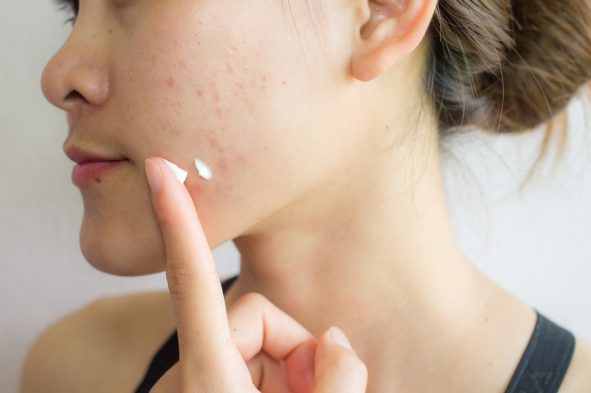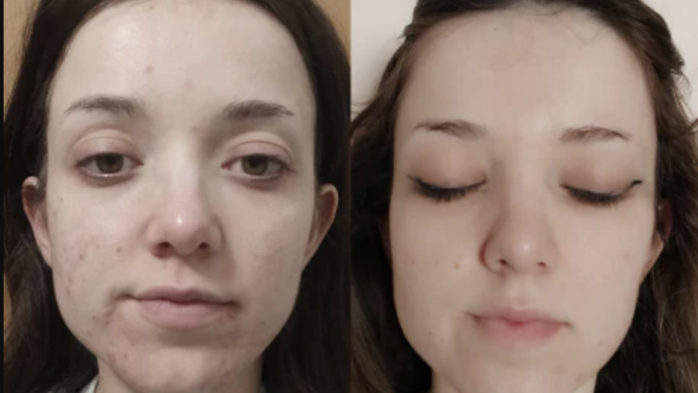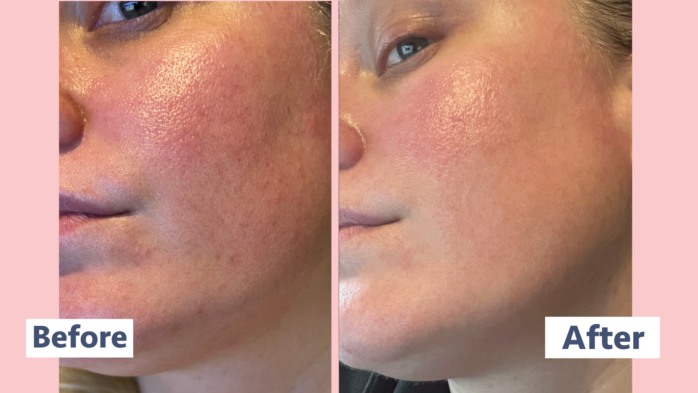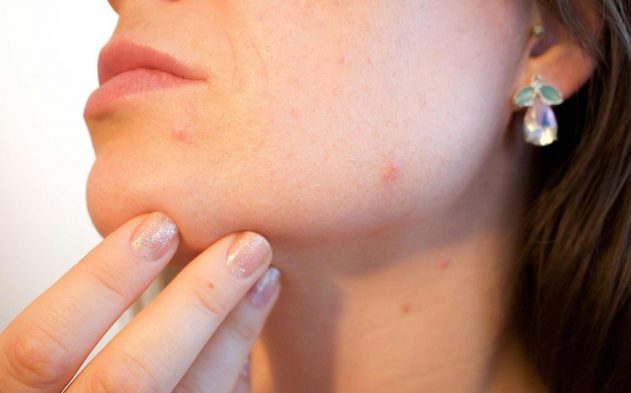
Feeling down about acne scars? We speak to the experts to find out how to get rid of acne scars or prevent them from forming in the first place
As if suffering from acne for years – often decades in our case – wasn’t bad enough, once the spots subside, you’re often left with acne scars.
Often called pockmarks, or pick marks, acne scars aren’t just caused by you picking or squeezing your spots, although this doesn’t help of course.
They can also be caused by things that aren’t always in your control.
To learn more about what causes pockmarks and how to get rid of acne scars, we spoke to Rachael Robertson, skincare specialist, and founder of Bedew Skin.
 Getty Images/iStockphoto
Getty Images/iStockphoto “Acne scars are the result of inflammation of acne blemishes,” explained Robertson. The blemish – a papule, pustule, or cyst – causes the affected acne pore to swell up.
This causes the wall of the pore to break and leave what’s known as a pockmark, or acne scar.
If the acne blemishes are small, the pockmarks are shallow and heal quickly. However, if the contents of blemishes spill into the surrounding tissue they can cause deeper scars.
The longer this goes on, the greater the chance that the blemishes will scar the skin and it can create a vicious circle of inflammation, scarring, more inflammation, and more scarring.
You can also cause acne scars and pockmarks by picking at your spots, popping pimples, and clogging your pores with certain skincare products. Anything that increases the chances of bacteria – beyond what occurs naturally from acne – can also make the problem worse.
This includes things like not removing your makeup properly, or sleeping on dirty pillows.
 Aegle's
Aegle's Pictured is a before and after image of a 21-year-old acne sufferer. The after image shows her skin after using the Aegel’s Acne Clear Now supplement
Not all acne scars are created equal.
“There are various types of acne scars,” continued Roberston. “Atrophic scarring in particular can come from picking and/or squeezing breakouts. People usually use their nails or a tool to do it and if done with too much pressure or a sharp tool, it can damage the skin and cause pitted scarring.
“There is also hyperpigmentation which can leave your skin with dark marks (red/brown) once your acne has healed and this stems from broken blood vessels from squeezing and picking.”
Atrophic scars are acne scars that heal below the normal layer of tissue.
Other types of acne scars you might read about include:
FURTHER READING: The science of oily skin and how to get rid of it for good | What causes acne and how to get rid of it
As with scars elsewhere on your body, it’s not easy to get rid of acne scars fast. Certainly not without aesthetic treatments.
That’s not to say you can’t get rid of them at all, or you can’t effectively reduce their appearance, but we just want to be honest and realistic.
“Products with Vitamin A from the retinoid family vary in strength and are great for cell regeneration, which can help the appearance of scarring and hyperpigmentation,” Robertson told mamabella.
“Vitamin C helps to brighten skin and lighten dark spots, so that can be really helpful for hyperpigmentation, too. As can AHA/BHAs. They’re exfoliants and the removal of dead skin cells can help the appearance of scarring.” You can read more in our guide to the truth about the acids lurking in your skincare.
 mamabella | mamabella
mamabella | mamabella The image on the left shows what our skin looked like before our Paula’s Choice Exfoliant review. The image on the right is how it looked after four weeks
One of the most-used products in acne treatment is salicylic acid. This can help keep pores clean, reduces discolouration, exfoliates dead skin cells, and removes texture.
Another effective acne treatment is glycolic acid. This also works as an exfoliant and is an antioxidant and antibacterial which can improve the skin’s appearance as well as limit the production of new acne blemishes.
We recommend: Accutane cream, used to treat severe acne, includes Vitamin A which reduces hyperpigmentation. Azelaic acid is a chemical exfoliant that kills bacteria on the face, while any product that contains benzoyl peroxide is great for acne and blemishes and minimising oil.
The latter two products don’t necessarily get rid of acne scars but they reduce the severity of your acne, to avoid blemishes from turning into scars or by stopping scars going deeper and wider.
We recommend the following best products for acne scars:
We also can’t rate the Aegle’s Acne Clear Now supplement highly enough. Often acne in women has a hormonal cause and Acne Clear Now helps target these problems to help clear your skin. You can read more in our Acne Clear Now review.
We also have more of the best skincare for acne recommendations here.
However, topical products can only do so much.
“They may be helpful for the appearance of scarring by hydrating your skin effectively and reducing the appearance of hyperpigmentation marks, but for pitted scarring, they aren’t going to be enough. It’s best to combine the correct homeware with professional treatments to tackle scarring.”
Microneedling for acne scars is a popular acne treatment because it introduces tiny wounds in the skin which then prompts the skin to heal and regenerate.
The number of treatments you need will depend on the severity of the scarring. Combining this treatment with a chemical peel for acne scars can help with stubborn hyperpigmentation. Using both treatments together maximises the effect.
Then there is laser treatment. This is one way to get rid of acne scars fast – or at least faster – but it comes with a high cost. It works because it penetrates deep into the layers of skin and eliminates the deep scarring that acne scar creams can’t always touch.
You can read more in our How to get rid of spots fast with this failsafe makeup artist tip
 Pixabay
Pixabay Although it may be tempting, avoid squeezing your pimples as it can spread the infection and make the area more inflamed.
Popping pimples can increase the healing time and lead to possible scarring, so let your skin heal on its own.
Treating your acne as soon as it develops can also prevent scarring to avoid penetrating deep into your skin.
And wearing SPF is essential, every day, to protect the skin as lack of protection can worsen scars and hyperpigmentation. You can read more about why SPF is so important here.

After a stint as mamabella’s first-ever intern, Shyma is now a freelance beauty journalist and influencer. Shyma believes in the empowerment of all individuals so being part of the mamabella team is a perfect fit.
